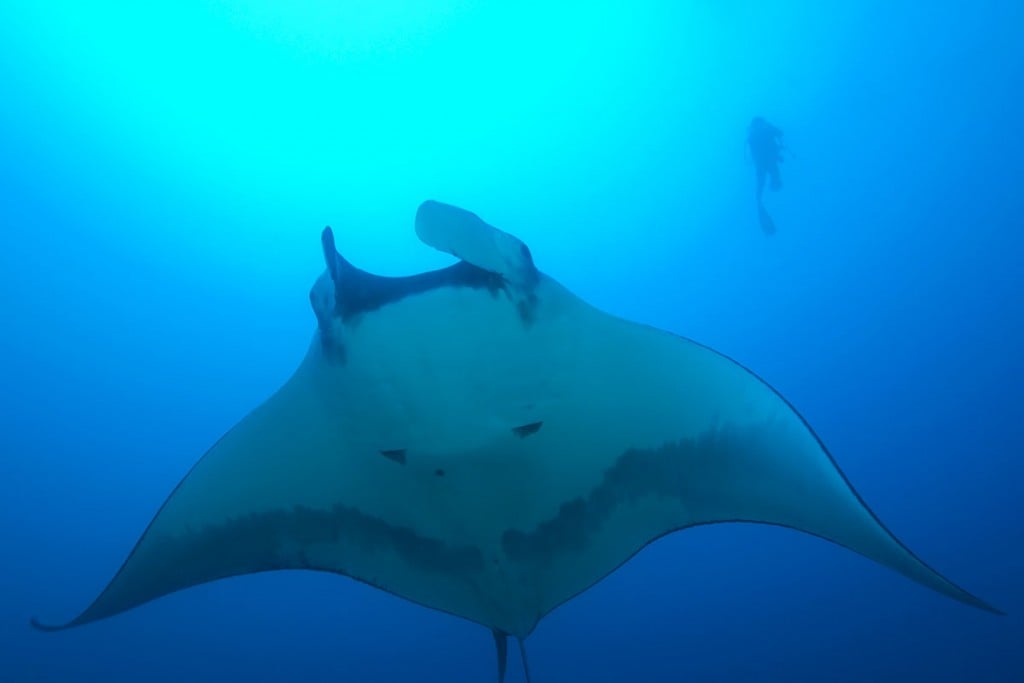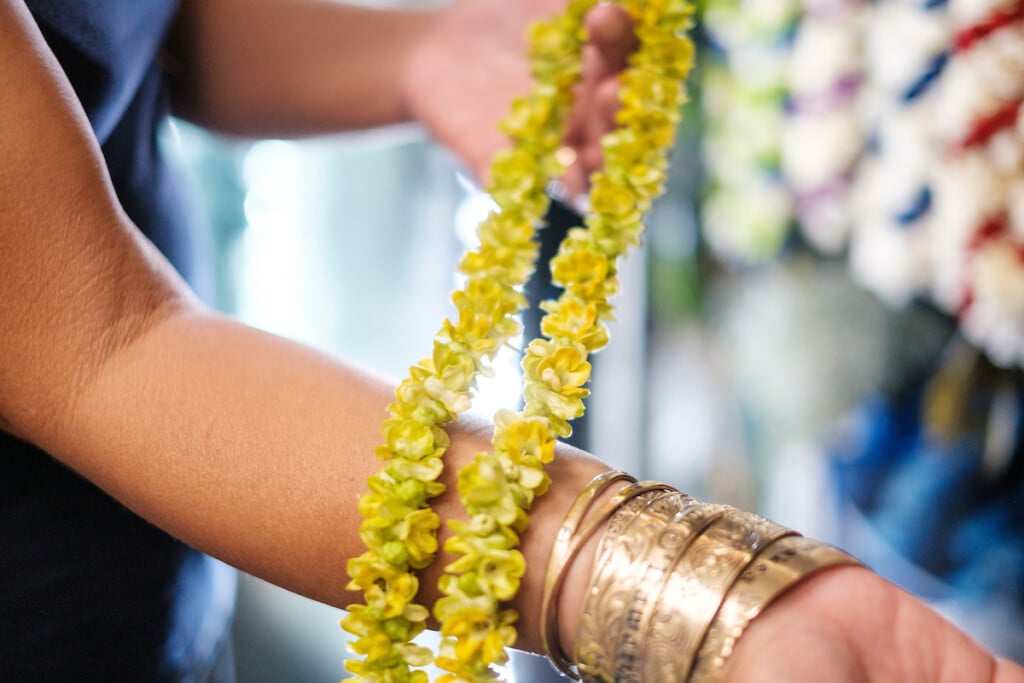The Cultural Significance of the Manta Ray in Hawaii
Long before Hawaii Island’s manta rays entranced visitors who come for snorkeling and diving tours, Native Hawaiians held the graceful creatures in high regard.


Manta rays are big business in Kailua-Kona, where local outfitters estimate some 80,000 people come to snorkel and dive with them each year.
The manta tours are done nightly, where big spotlights attract the plankton on which the graceful giants feed. The filter feeding rays congregate in two locations along the Kona coast—an area called Garden Eel Cove not far from the airport, and off the back porch of the Sheraton Kona Resort and Spa at Keauhou Bay.
Last week, the Sheraton hosted a weeklong event with talks about the biology and ecology of rays, and one invited Hawaiian cultural practioners, Roxanne Kapuaimohalaikalani Stewart, shared her perspective on hahalua (mantas). Long before Hawaii Island’s resident population of manta rays entranced visitors on Kailua-Kona’s popular snorkeling and diving tours, Native Hawaiians held the graceful creatures in high regard.
Stewart, a Hawaiian cultural specialist with the nonprofit organization Kai Palaoa, says manta rays are mentioned in the second wa (section) of the kumulipo, the Hawaiian creation chant. “Hawaiians recognize the need to honor life within the kai (ocean),” she says. “There was a hierarchy given to the animals of the sea. There are the simple animals like coral and fish, and the higher forms—the deep divers who go where we cannot go.”
On Saturday evening, after a performance by a visiting hula halau (troupe) whose motions evoked the movements of the manta, Stewart told a small crowd of around two-dozen attendees why mantas may have been so revered

“The name of the manta—hahalua—can be interpreted as ‘two breaths,’” she says, “ha, meaning breath, and lua, meaning two … When mantas leap [out of the water], their experience from below transcends into our sphere … Their transcendence speaks to things that we don’t yet know.”
While it is not that common for manta rays to breech, Stewart says, “We don’t always know what they do or why they do what they do, especially when we are not looking … It’s easy to put a human interpretation on their actions—they leap for fun, or to knock off particles off their skin. But the questions of what are they bringing back into their space, and how are they transferring energy—that’s where Western science stops and we don’t quite know the answers. We might not be ready or worthy of knowing.”
The experience of seeing a manta ray, she says, has the ability to take anyone out of their own thoughts, about their daily routine about problems at work, and allows them to huli i ke au hou, to begin anew in a new space and time. “It’s hard to find somebody that doesn’t acknowledge the ‘wow’ effect on our consciousness after seeing hahalua in the wild. It does make you wonder—what are they tapping into that we aren’t?”


